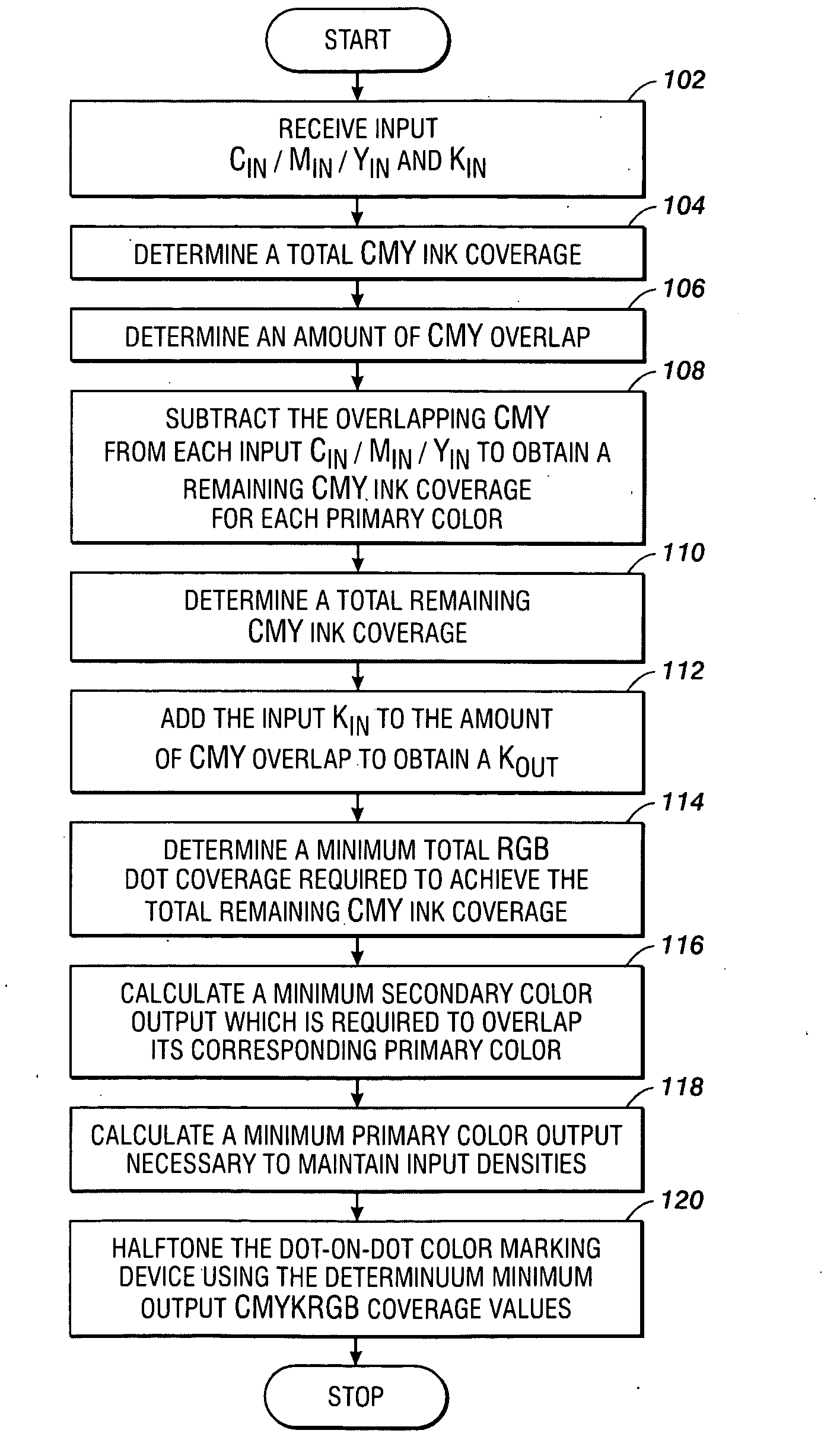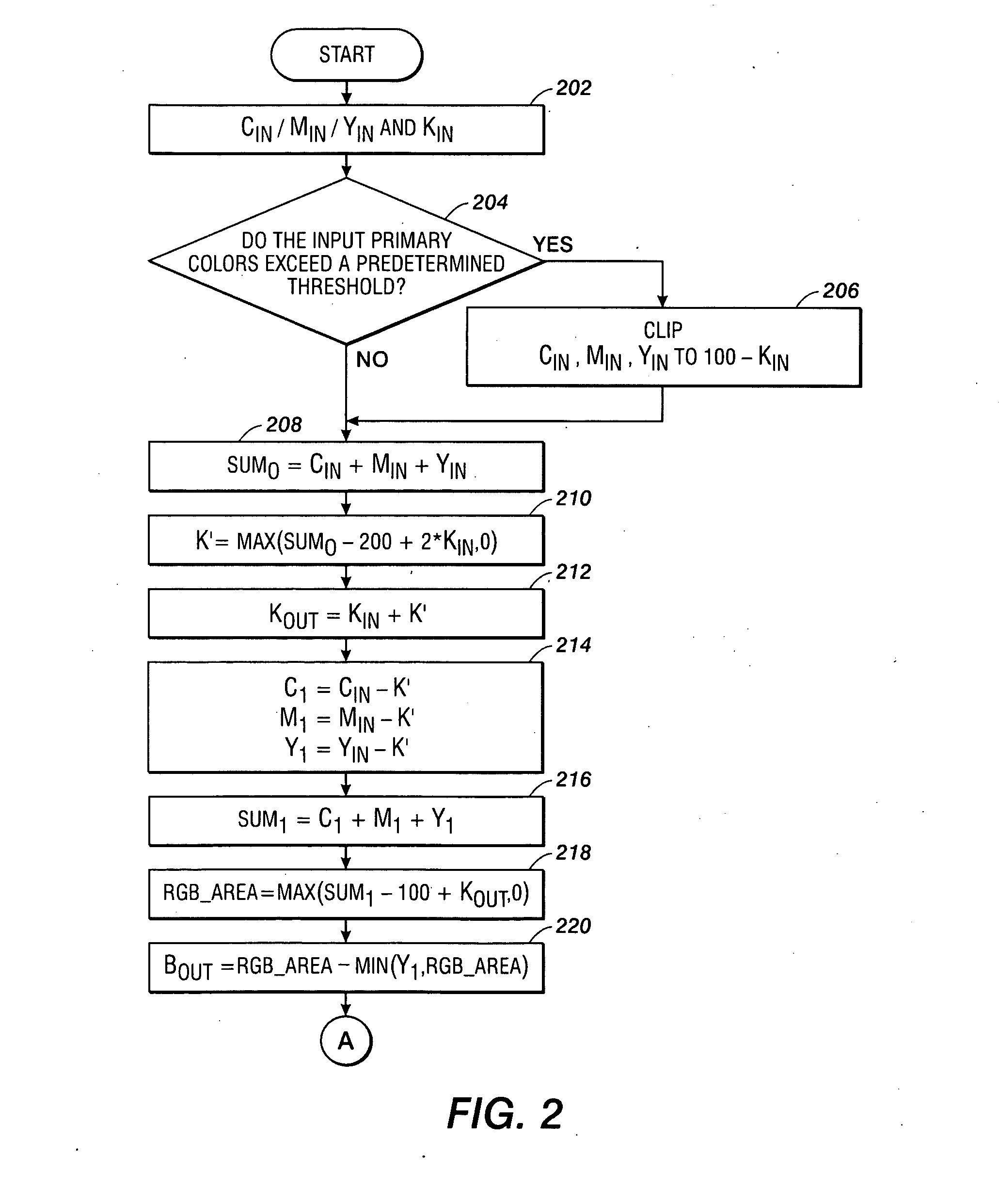Minimizing dot graininess in dot-on-dot printing devices
- Summary
- Abstract
- Description
- Claims
- Application Information
AI Technical Summary
Benefits of technology
Problems solved by technology
Method used
Image
Examples
Embodiment Construction
[0021]What is provided are a system and method for minimizing dot visibility in color marking devices capable of dot-on-dot printing. The present method achieves minimum dot visibility for a given dispersed-dot screen by performing a CMYK to CMYKRGB conversion which uses less visible dots as much as possible before more visible dots are introduced. As will be described herein in more detail, the output color dot coverages are calculated sequentially to minimize the coverage of more visible dots in a decreasing order of brightness.
[0022]It should be understood that one of ordinary skill in this art would be readily familiar with many facets of color science such as, but not limited to, halftoning processes, halftone screens, dot-on-dot printing systems, color space, color gamuts, and other related techniques commonly found in this art. Additionally, one of ordinary skill in this art would also be familiar with advanced mathematical techniques use in various color manipulation and col...
PUM
 Login to View More
Login to View More Abstract
Description
Claims
Application Information
 Login to View More
Login to View More - R&D
- Intellectual Property
- Life Sciences
- Materials
- Tech Scout
- Unparalleled Data Quality
- Higher Quality Content
- 60% Fewer Hallucinations
Browse by: Latest US Patents, China's latest patents, Technical Efficacy Thesaurus, Application Domain, Technology Topic, Popular Technical Reports.
© 2025 PatSnap. All rights reserved.Legal|Privacy policy|Modern Slavery Act Transparency Statement|Sitemap|About US| Contact US: help@patsnap.com



